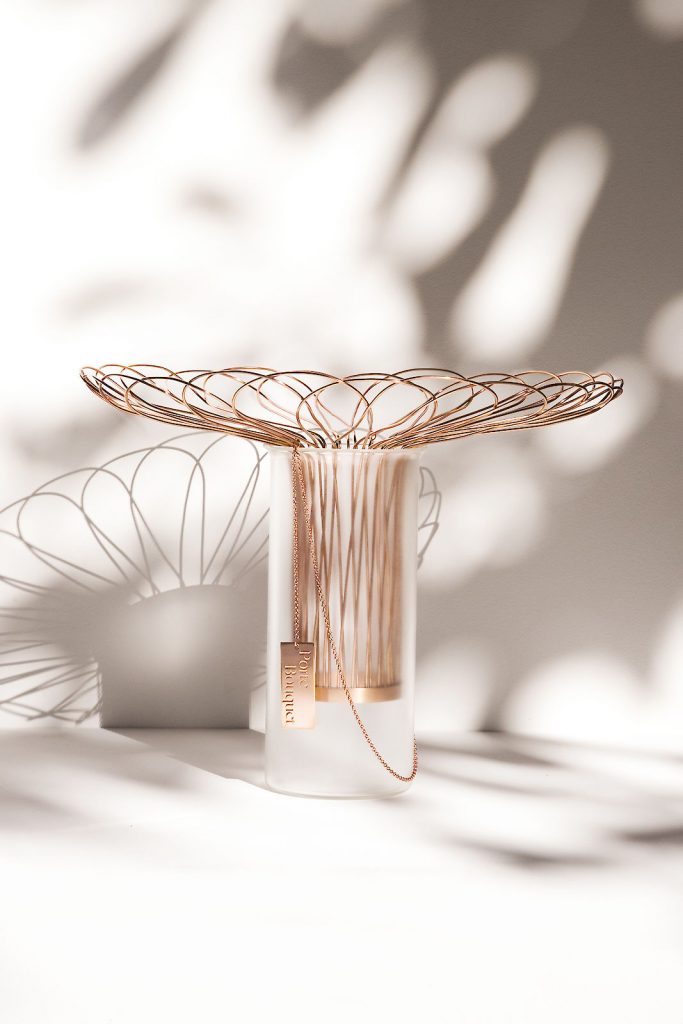

The Vase Edit: 7 Vases Perfect for the Material Enthusiast
From ceramic to glass, traditional shapes to new forms, discover a wide range of textural, colourful, and functional vases by makers from around the world. This edit explores the Adorno archives to bring together a curated selection of vases which portray ingenuity in their use of material. Woven rattan, textured rubber, blown glass, and innovative bone-based bio material bring attention to the variety of media used by makers to create these unique pieces. Whether used functionally to hold bouquets of beautiful flowers or more aesthetically to bring colour and texture to a space, the pieces curated here show a love for material, craftsmanship, and an attention to detail.
Featuring pieces from A. Vetra, dach&zephir, Hollow Forms, Joel Escalona, Karen Klim, Studio B Severin, and Valdís Steinarsdóttir.
A. Vetra, “Portafiori I”




Portafiori is the starting point of research on the object “vessel” as a carrier of heritage values translated into celebrative sculptures. It is inspired by the domestic and rural life in the feminine world in ancient Greek times, where baskets as the Calathus – a top hat-shaped one – were used by women to collect and carry goods such as wool, flowers, and fruits.
View A. Vetra’s showroom, including “Portafiori I”
dach&zephir, “Porte Bouquet” Vase
The Porte Bouquet is an auto-produced vase, celebrating the elegance and smart architecture of an old accessory/jewel that disappeared in the XIX century — called also « porte-bouquet » (flower bouquet holder). dach&zephir was fascinating by the elegance of this accessory, and its in between functionality and assumed aesthetic. Its construction has inspired the design of their vase, by focusing their attention on an elegant way to hold and present flowers bouquet and simplify the act of changing the water.
View dach&zephir’s showroom, including the “Porte Bouquet” Vase
Hollow Forms, “Alienation 3”




Part of the Hollow Forms core collection titled “Alienation”, designed and produced in Palestine in collaboration with local expert craftsmen that have developed a family glassblowing business for generations. The form is designed using 3D architecture software that was used to communicate the design with the glassblowers. The form itself is inspired by ancient glass vessels found in the Levant.
View Hollow Forms’ showroom, including “Alienation 3”
Joel Escalona, “Miss Jolie” Ceramic Vase






“Miss Jolie” is a decorative vase that pauses movement; like a cloth, its folds reveal an ironic static dynamism. The undulating and twisting ceramic form draws the eye around the piece, while its matte or glossy surface adds another textural element to its repeating, lined body.
View Joel Escalona’s showroom, including the “Miss Jolie” Ceramic Vase
Karen Klim, “Opp av mosen”/ “Up From the Frozen Moss”, Glass Vessel / Vase/Sculpture
Nature has always been a great source of inspiration for Karen Klim. The inspiration for the “Opp av mosen” Glass Vessel / Vase/Sculpture is the ice slowly creeping in, covering the landscape outside Klim’s studio in Oslo. Produced during the uncertainty of the Covid-19 pandemic for the Virtual Design Destination, Klim’s blown and hot-formed glass evidences the makers’ ingenuity amidst restrictions, isolation, and solitude.
View Karen Klim’s showroom, including the “Opp av mosen” Glass Vessel / Vase/Sculpture
Studio B Severin, “Printemps_GWG” Vase
The “Printemps” vase process utilizes 3D printing and rubber rotation casting to produce a flowing, matte surface overlayed with a sparkling pattern of jewel-like dots. Its rubber exterior is complemented by a woven rope base, bringing bright colour and unique texture to any space it is set in.
View Studio B Severin’s showroom, including the “Printemps_GWG” Vase
Valdís Steinarsdóttir, “Just Bones”
“Just Bones” focuses on developing a strong, natural material from animal bones. The bones are ground and their various qualities used to develop and create a material that is similar in strength to MDF. It is an example of how various opportunities are hidden in our immediate environment. By exploring familiar materials from different perspectives, new opportunities for utilization can be found.
View Valdís Steinarsdóttir’s showroom, including “Just Bones”









